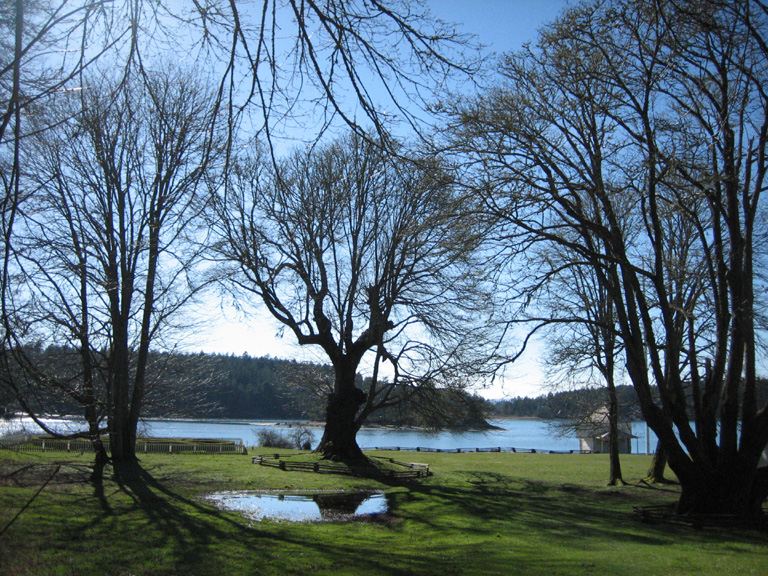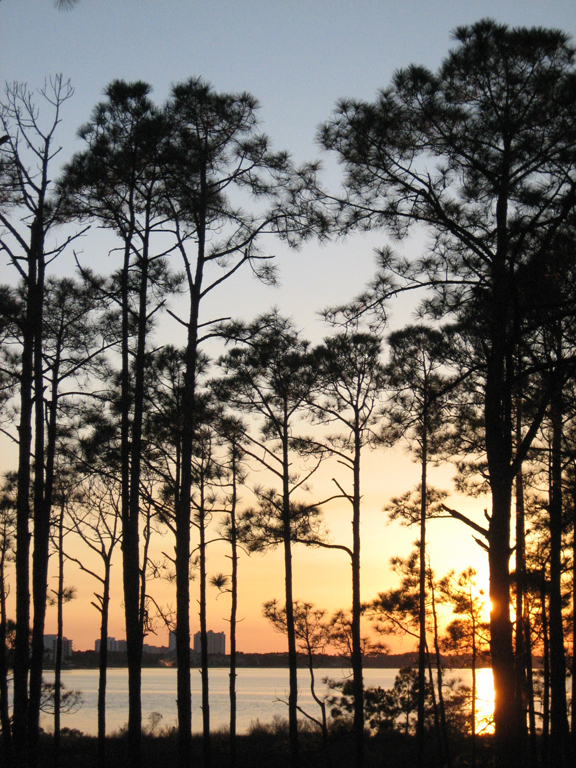Kenn Kaufman resurfaces in the blogosphere
View Larger Map
tidbits about birds, birders and birding from WildBird's editor
Migratory birds, modern-day canaries in the coal mine, reveal an environmental problem hidden to consumers. Testing by the United States Food and Drug Administration shows that fruits and vegetables imported from Latin America are three times as likely to violate Environmental Protection Agency standards for pesticide residues as the same foods grown in the United States. Some but not all pesticide residues can be removed by washing or peeling produce, but tests by the Centers for Disease Control show that most Americans carry traces of pesticides in their blood. American consumers can discourage this poisoning by avoiding foods that are bad for the environment, bad for farmers in Latin America and, in the worst cases, bad for their own families.Stutchbury, who teaches biology at Toronto's York University, wrote "Silence of the Songbirds: How We Are Losing the World's Songbirds and What We Can Do to Save Them" (2007).
Labels: conservation
San Francisco's picturesque skyline would be dark at night under a first-in-the-nation law proposed Tuesday that would mandate all skyscrapers turn off nonemergency lights after work hours.The proposed law says businesses that do not comply would receive fines. I'm not sure that's a good route, because it creates more bureaucracy to enforce the law.
Board of Supervisors President Aaron Peskin said his measure would reduce the energy wasted in the city's downtown.
"Anyone who has passed through our Financial District after dark knows that many large financial buildings in the downtown keep their lights on throughout the night even when there is not work or janitorial service going on," Peskin said.
Birds migrating at night are strongly attracted to, or at least trapped by, sources of artificial light, particularly during periods of inclement weather. Approaching the lights of lighthouses, floodlit obstacles, ceilometers (light beams generally used at airports to determine the altitude of cloud cover), communication towers, or lighted tall buildings, they become vulnerable to collisions with the structures themselves. If collision is avoided, birds are still at risk of death or injury. Once inside a beam of light, birds are reluctant to fly out of the lighted area into the dark, and often continue to flap around in the beam of light until they drop to the ground with exhaustion. A secondary threat resulting from their aggregation at lighted structures is their increased vulnerability to predation.Also consider asking Audubon California and Golden Gate Audubon Society what they're doing, if anything, related to this proposal. The FLAP website doesn't show San Francisco as a city with a FLAP program; perhaps the site is outdated, and perhaps birders have taken the iniative to address the skyscrapers' effects on migrating birds. If they haven't taken that initiative, now's a good time.
Labels: action, conservation, migration

Labels: conservation, Great Texas Birding Classic
 "Jazz Aviary" offers birders and jazz enthusiasts a chance to appreciate sights and sounds that appeal to both groups. Suze Krebs will perform this Thursday, March 27, in Northridge and on Tuesday, April 1, in Culver City. Tickets cost $20 to $25, and a portion of the proceeds will go to the Los Angeles chapter of National Audubon Society.
"Jazz Aviary" offers birders and jazz enthusiasts a chance to appreciate sights and sounds that appeal to both groups. Suze Krebs will perform this Thursday, March 27, in Northridge and on Tuesday, April 1, in Culver City. Tickets cost $20 to $25, and a portion of the proceeds will go to the Los Angeles chapter of National Audubon Society.Labels: music
 Between Feb. 15 and 18, birders submitted more than 85,700 checklists, identified 635 species and provided thousands of bird photos. The citizen scientists contributed to a database that ornithologists and other researchers can use to study species populations and distribution.
Between Feb. 15 and 18, birders submitted more than 85,700 checklists, identified 635 species and provided thousands of bird photos. The citizen scientists contributed to a database that ornithologists and other researchers can use to study species populations and distribution.Labels: citizen science
 After revelling in the first day of spring, consider savoring the latest edition of I and the Bird, hosted by Clare of The House & Other Arctic Musings. Clare's created a wonderful roundup of blog posts, highlighted by pertinent quotes. I particularly like the Douglas Adams snippet.
After revelling in the first day of spring, consider savoring the latest edition of I and the Bird, hosted by Clare of The House & Other Arctic Musings. Clare's created a wonderful roundup of blog posts, highlighted by pertinent quotes. I particularly like the Douglas Adams snippet.Labels: carnival, I and the Bird

Labels: Roger Tory Peterson
Deputy Cape May Mayor Neils Favre reported receiving 600 e-mails in a single day from cat supporters, and almost 100 protesters attended council meetings. Among other things the cat backers claimed that no proof had been provided that any birds at all had been killed.What do birders need to do differently -- and soon! -- so that they present similar support for birds in situations like this?
Sadly, no similar effort was mounted on behalf of the endangered birds.
Labels: Cape May, cat, endangered species
Labels: conservation, wildlife refuge
 On the Sunday closest to March 15, the town of Hinckley, Ohio, welcomes the return of Turkey Vultures to their region. This year's celebration took place yesterday at Buzzard Roost in Hinckley Reservation. Activities for TV aficionados included hikes, live music, bingo, items to purchase, storytelling, children's crafts and historical bus tours of Hinckley.
On the Sunday closest to March 15, the town of Hinckley, Ohio, welcomes the return of Turkey Vultures to their region. This year's celebration took place yesterday at Buzzard Roost in Hinckley Reservation. Activities for TV aficionados included hikes, live music, bingo, items to purchase, storytelling, children's crafts and historical bus tours of Hinckley. Labels: festivals, Turkey Vulture
Labels: research

Labels: humor
Labels: conservation, endangered species
 In a little more than a week, three young birds that hatched at Oregon Zoo will be released at Arizona's Vermilion Cliffs National Monument. The three -- Tatoosh, Ursa and Wiley -- will begin living in the wild on March 15. A cohort, Meriweather, will join them later.
In a little more than a week, three young birds that hatched at Oregon Zoo will be released at Arizona's Vermilion Cliffs National Monument. The three -- Tatoosh, Ursa and Wiley -- will begin living in the wild on March 15. A cohort, Meriweather, will join them later.Labels: California Condor, captive breeding, conservation, endangered species

Labels: children, conservation, U.S. Fish and Wildlife Service, wildlife refuge
As for travel epiphanies... What I have instead is the comprehensive reinforcement of two beliefs I already held. First, although the cultural world undeniably has become more homogenized, the natural world endures, genuine and full of wonders, and it's here that travelers looking for diversity find the greatest rewards. There may be a Wal-Mart in Whitehorse, Yukon, and the same cable channels on televisions from the Bering Sea to Biscayne Bay, but anyone willing to get out of towns and cities can find proof of place in every park, preserve, and wildlife refuge. Flamingos do not nest on the tundra; spruce doesn't grow in the plains; pronghorn don't graze in the Deep South piney woods. People who lament the increasing sameness of the country are spending too much time in the mall.Amen.
